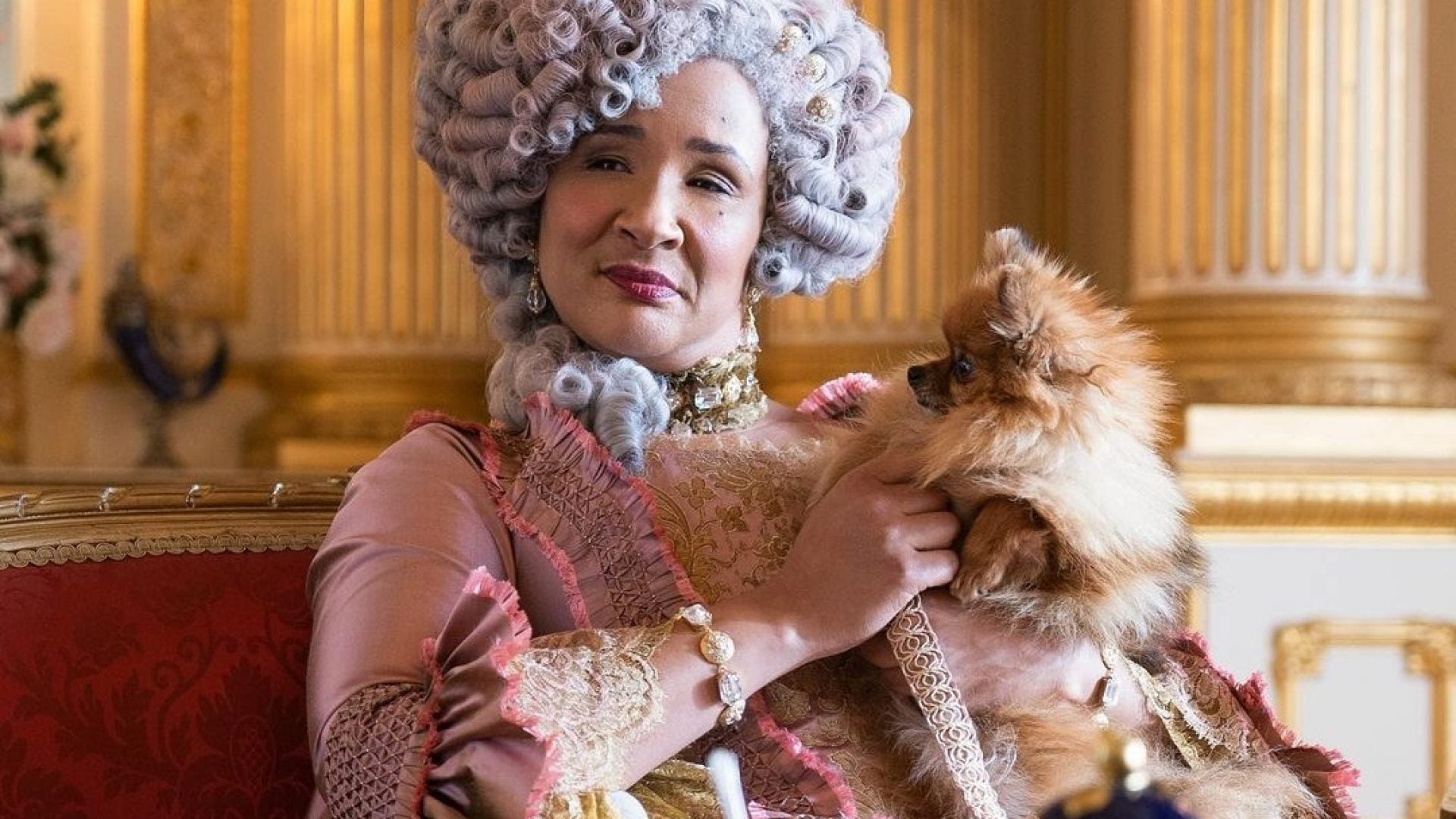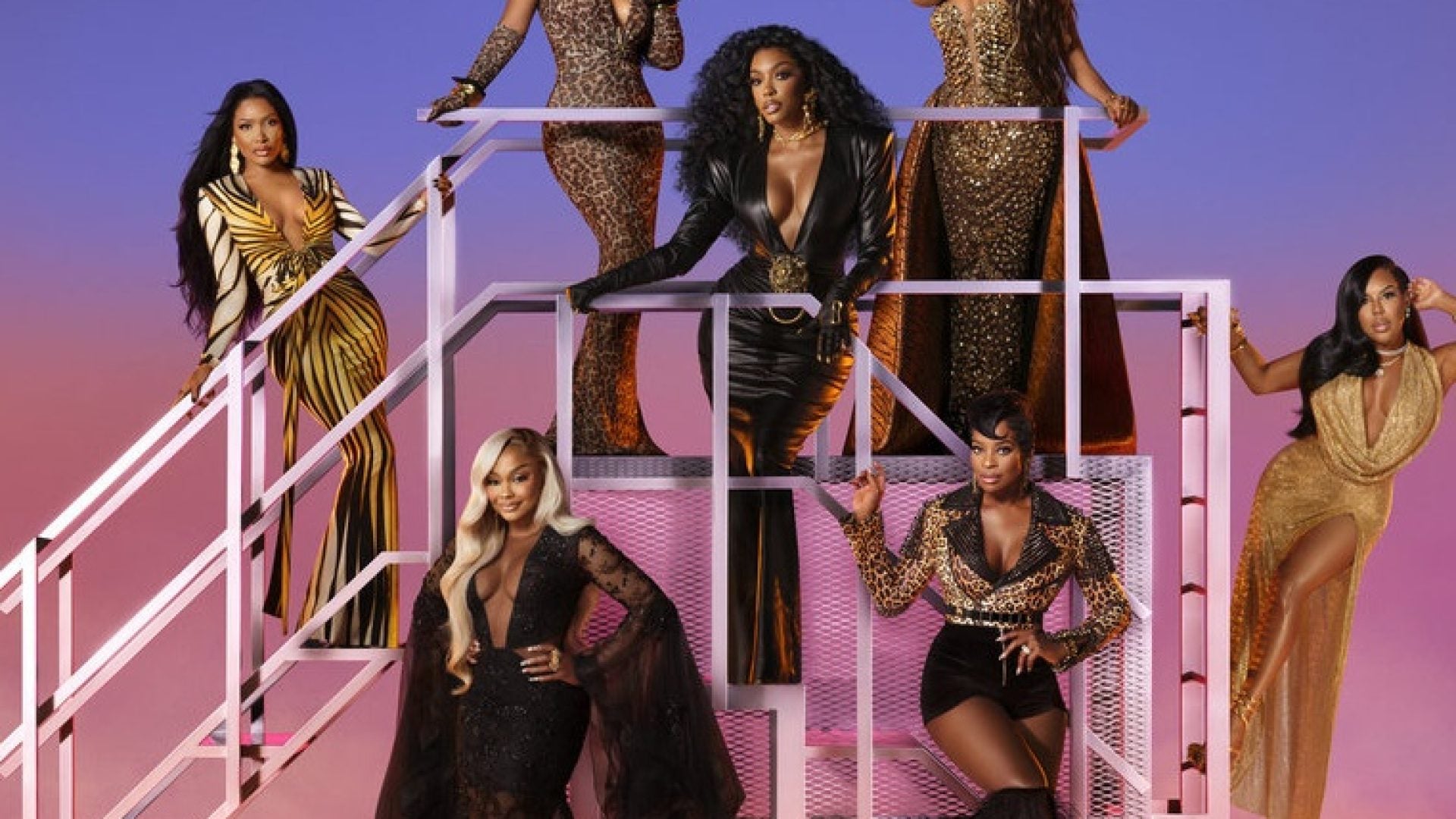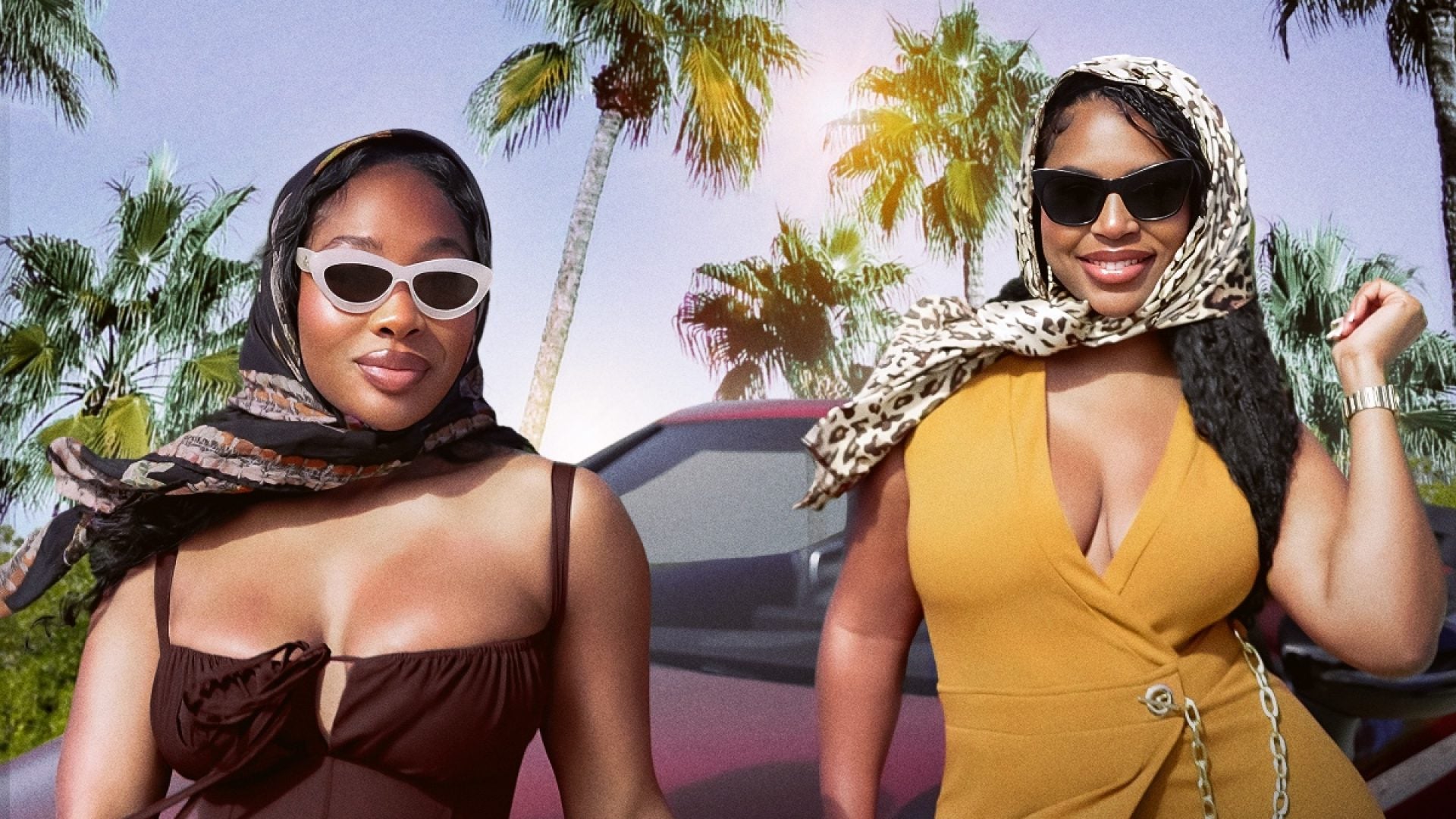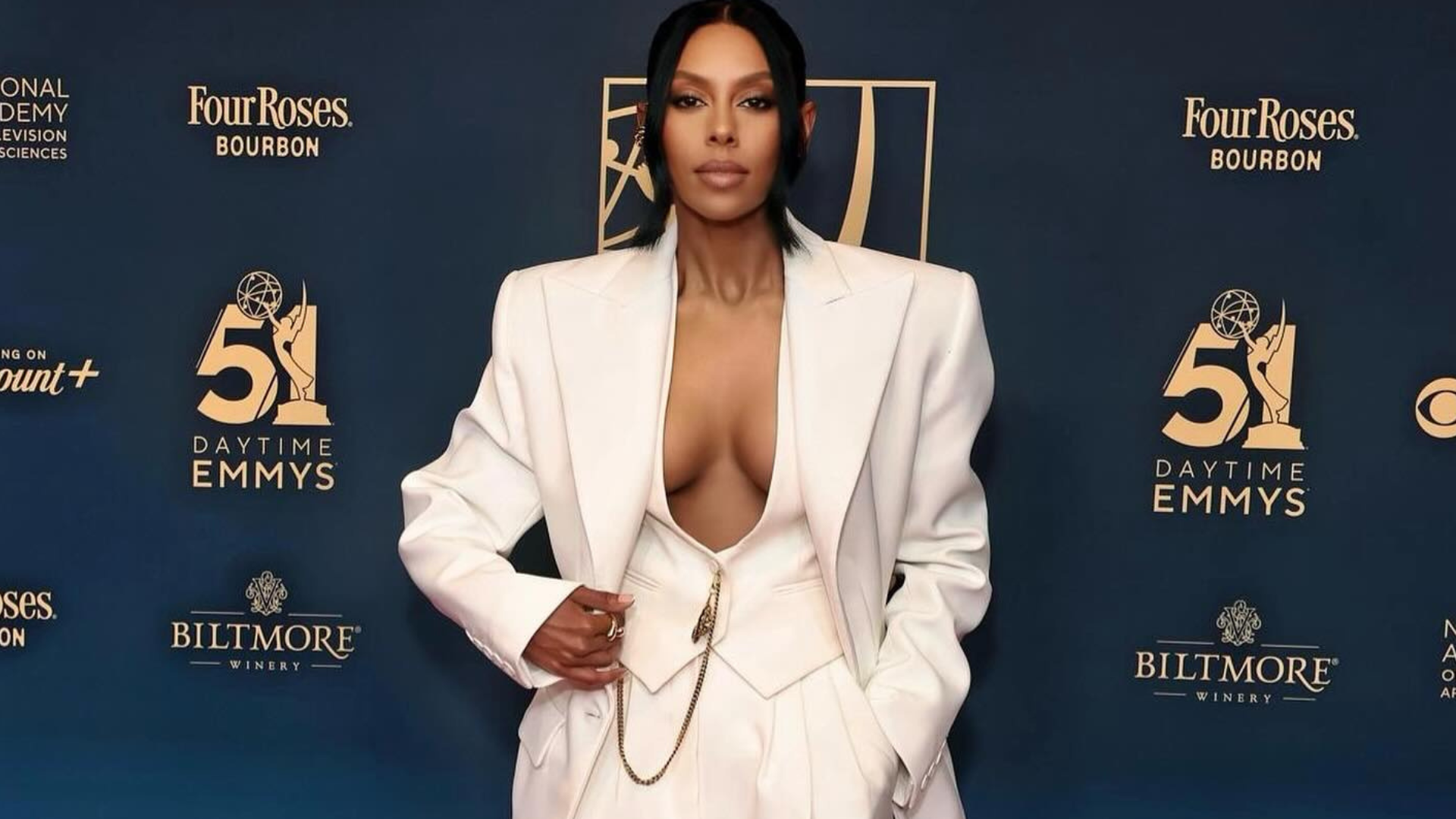
While yes, the twist and turns of the plot, paired with the marvelous acting of Bridgerton is deserving of plenty of praise, the wigs, to me, as a beauty obsessive, were the true standout. I was particularly enamored by those of Queen Charlotte, played by Golda Roushouvel. Her looks were marked by braids, locs, and afros, all celebrating the hair of Black women while still maintaining the general aesthetic of the hair of the monarch.
Responsible for the many jaw-dropping looks was hair and makeup designer Marc Pilcher, who along with his wonderful team was able to curate a brand new wig for each and every one of the Queen’s looks. I got to chat with Pilsher about the creation of the pieces of artwork, his inspiration, and how long each masterpiece actually took to master.
Why were the wigs, particularly for Queen Charlotte, so important?
Pilcher: We actually ended up using more wigs than we normally would. Usually we would use a lot of the actor’s own hair and just add pieces, but we have so many characters that had specific characteristics, for example, the Featheringtons all have to be red heads. Luckily we had a really nice budget of money that we were able to create a variety of wigs for each character. I have the most amazing wig maker over here that I’ve mentored a few years and she made all of these beautiful creations.
Obviously when it came to the queen, we started off with two wigs: the natural Afro wig and then a white yak-hair powder wig. I was chatting with Chris Van Dusen, who’s the show runner and we just came up with the idea that because she has nothing to do all day long, she basically waits for her husband to die, and all she does is eat, and play with the dogs, and her ladies in waiting. So we were like she’s obviously someone who has time for a new dress, and a new wig to match everyday. So we sort of formulated her looks from there. I was doing my research at the beginning, and obviously there aren’t many portraits of people of African descent back then, so what I wanted to do is keep that traditional wig silhouette and make a more relevant version for the Queen.
That’s when I decided to add locs, braids, and massive afros. I was picking through some images and then I saw Beyoncé Knowles in Austin Powers Goldmember and that’s when I thought, ‘That’s what I want.’ I wanted the biggest afro someone had ever seen. That wig in particular was actually four or five wigs all placed together. So we had the wigs for the ringlets and then the we bought afros and then straightened them out and reset them on curls sticks and brushed them through so that we would get the best volume of afro, then sewed them on top of each other just to get that beautiful shape.
What was lovely was most of the time we would never tell Golda what wigs she was going to wear, we’d always like to surprise her and she’s ended up screaming in the morning.
How long did the wigs take to create?
Pilcher: You see, that’s the thing because we didn’t decide right at the beginning of production that we were going to be giving her a different wig every time. So we didn’t manage to do any of those wigs in prep. All those wigs we decided we had to create whilst we were filming. I would design the look and I would say to Hunter who looked after the Queen’s wigs, I would give him my idea. Then he might do a little sketch and we would work through that. Each wig probably took about three or four weeks to do. The larger one, like the one with locs, however, took more time because of the setting process.
Were there any ever wig dilemmas on set?
Pilcher: I don’t think so. We were really lucky. And with Golda, remember the wig that was really tall and had all the black braids and red ribbons in the back? That was the heaviest one of all the wigs. By the end of filming, once we got to the really big, white, beautiful one with the bows and locs. By that point, we’d sort of worked out how to make it so that it wasn’t so heavy, but just as large as the other one. We made sure that it could be made in a way that as soon as she came off camera, we could at least take it off. If we knew she had an half an hour break, we could take it off so she could rest her neck. You don’t want really heavy wigs. So I don’t think we had any catastrophes, and certainly not with the Queen. We were lucky.
What was your favorite wig to design for Queen Charlotte?
Pilcher: I think it’s the white one with the bows and the locs. That wasn’t the original intention I had for the look. At first, I wanted to have the locs sort of tied atop the Queen’s head, but it wasn’t working out. At the time I was making it for the Hastings Ball with the white bows and I just popped some around a birdcage and I thought, ‘Oh my God, that’s it.’ It literally just came from nowhere. I think it was my favorite. And it’s interesting because it’s one of the ones that’s almost seen the least because it’s such a fleeting moment which is a shame, but we can always pull it out another time, I suppose.
Was the application process marked by ease or was it difficult?
Pilcher: It was actually really quick because obviously these wigs were not supposed to look real. Golda would come in having braids with her stocking cap on, and she would have a makeup done. After that, it would probably take about 20 minutes. So it was actually quite quick in comparison to the other wigs,
Do you hope that what you all have done with Queen Charlotte’s wigs will impact future on-screen hair?
Pilcher: I hope so. I don’t want to stand here praising myself, but growing up, I loved history at school, and I loved old movies. I think these days, people don’t have that knowledge. But I hope that Queen Charlotte’s wigs with ultimately influence people. It’s actually been really sweet to see the reaction. There’s been somebody on Instagram who’s been practicing my looks and they’ve been posting it. So I think it really is impactful. I can’t believe that we’ve been so lucky and it was such a beautiful project.





